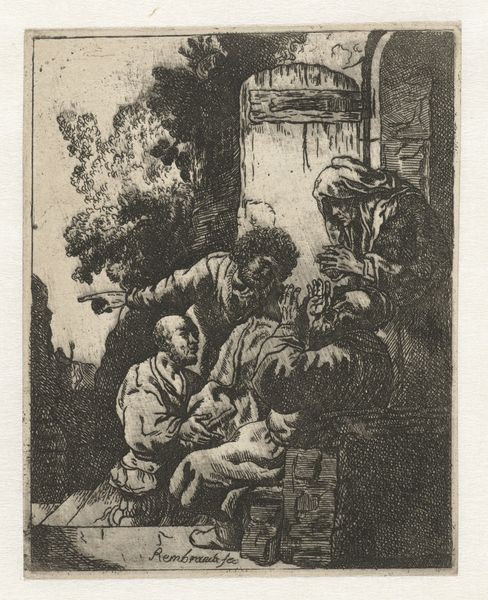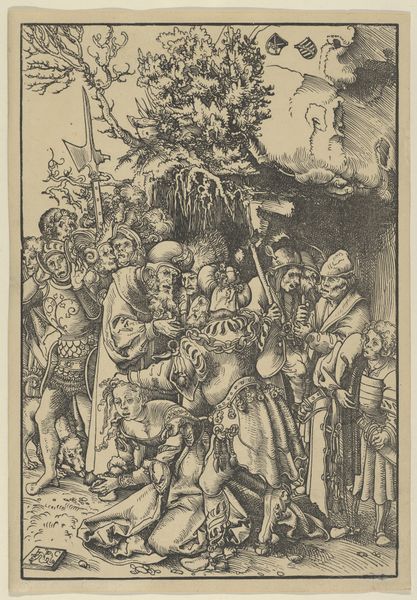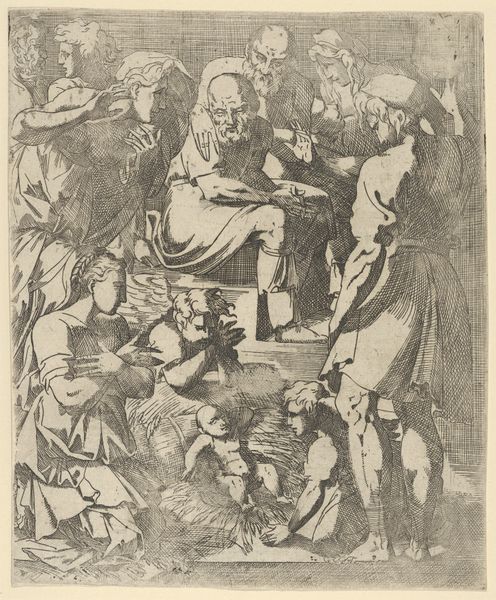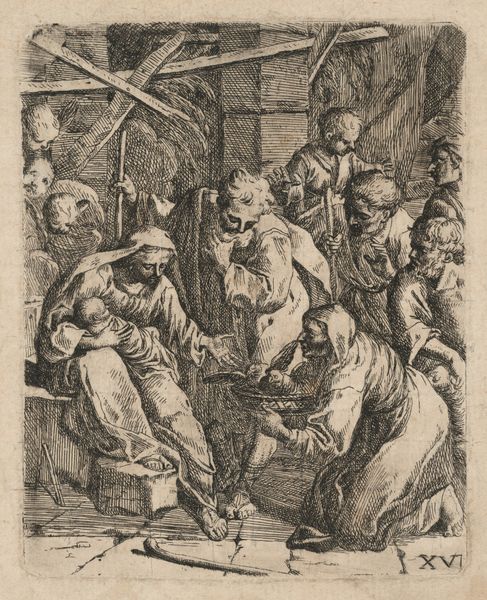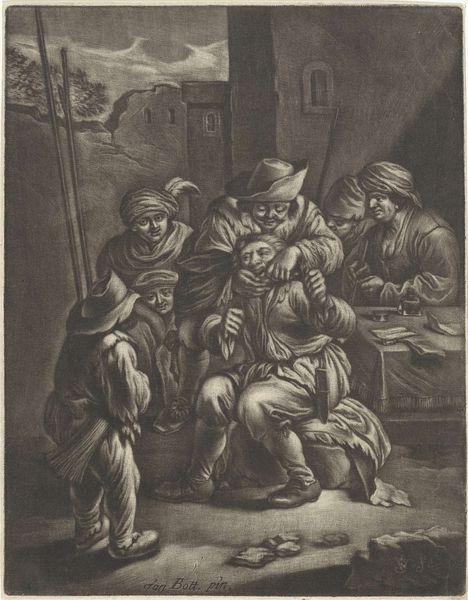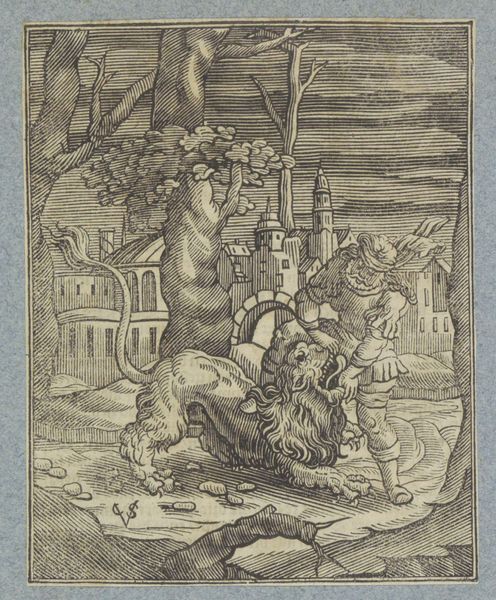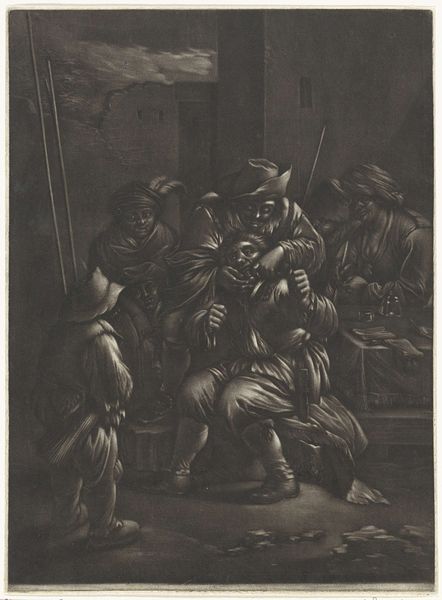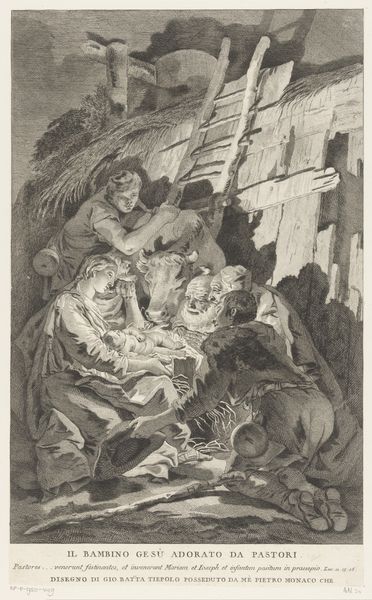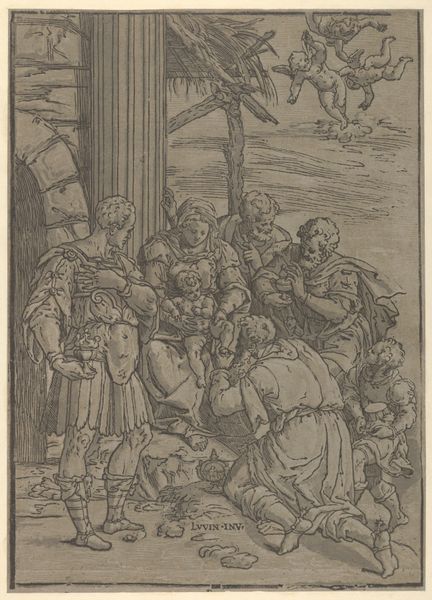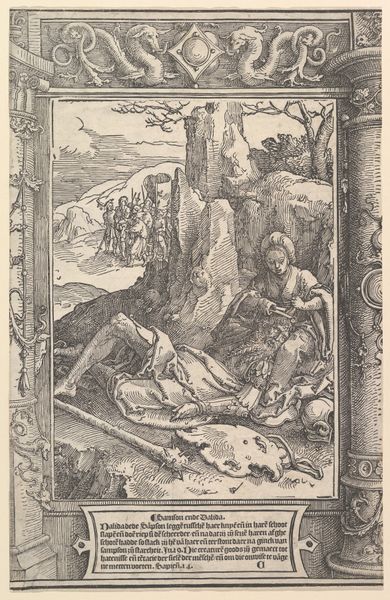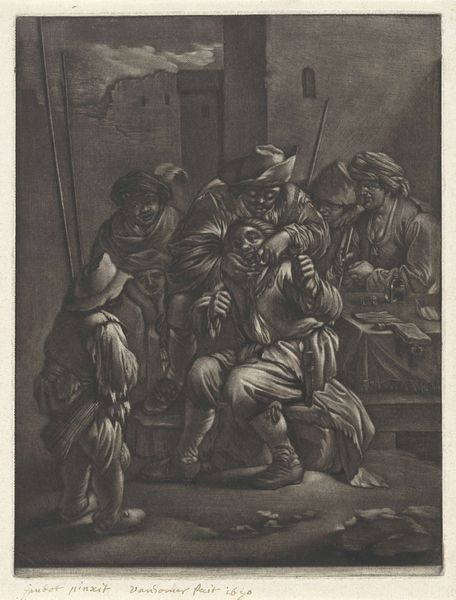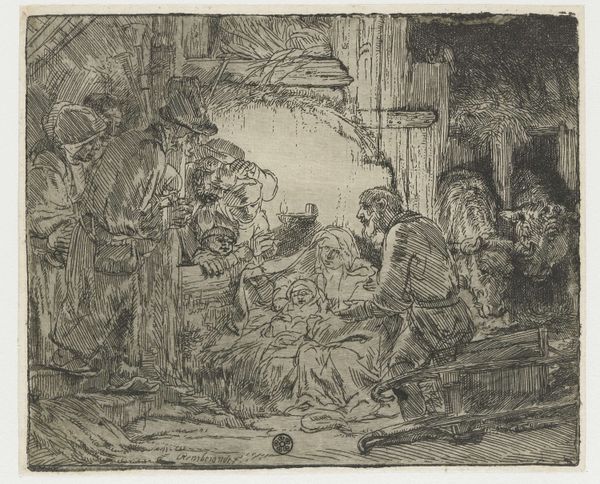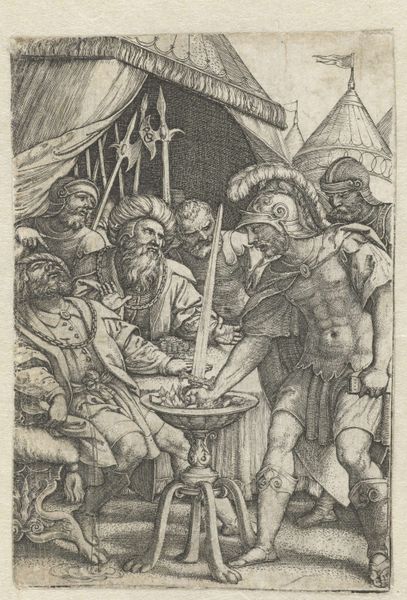
drawing, print, engraving
#
drawing
#
narrative-art
# print
#
mannerism
#
figuration
#
men
#
history-painting
#
italian-renaissance
#
engraving
#
virgin-mary
#
angel
Dimensions: sheet: 10 11/16 x 7 1/16 in. (27.2 x 17.9 cm) borderline
Copyright: Public Domain
Editor: This engraving, "The Adoration of the Shepherds," created between 1575 and 1582 by Giorgio Ghisi, is packed with figures and details. It feels quite dynamic, almost overwhelming, in its composition. What stands out to you most when you look at this work? Curator: Immediately, the dense symbolism arrests me. The infant Christ, illuminated, is nestled not in a royal palace, but a humble basket—a powerful statement about the inversion of earthly power. And consider the shepherds themselves, their faces filled with wonder, not regal adornment, a stark contrast to the angels hovering above in swirling clouds, trumpeting "Gloria in Excelsis". What message do you think Ghisi is trying to convey through these symbols? Editor: Perhaps it's about humility and the accessibility of faith, a message for everyone, regardless of status? Curator: Precisely! The angels traditionally signify divine announcement, but here, their placement atop the rustic stable integrates both the sacred and profane. Moreover, the specific inclusion of the ox and donkey is loaded; Jewish tradition associates them with recognizing the Lord, even when humans might fail. The use of light and shadow – where does that pull your eye? Editor: Definitely toward the baby Jesus. But the active poses and foreshortening on the Shepherds on the right grab your attention as well, making the scene feel like it’s unfolding rapidly. Curator: Notice how their energy contrasts with the Virgin's quiet contemplation. Does that contrast tell a story? Editor: It emphasizes the different ways people can respond to faith – through quiet reflection or exuberant action! This deeper dive really reveals layers I hadn’t noticed at first glance. Curator: Indeed. These recurring motifs reflect and shape cultural memory. Consider how these symbols have resonated throughout art history; even now, they subtly influence our collective understanding of this event.
Comments
No comments
Be the first to comment and join the conversation on the ultimate creative platform.
